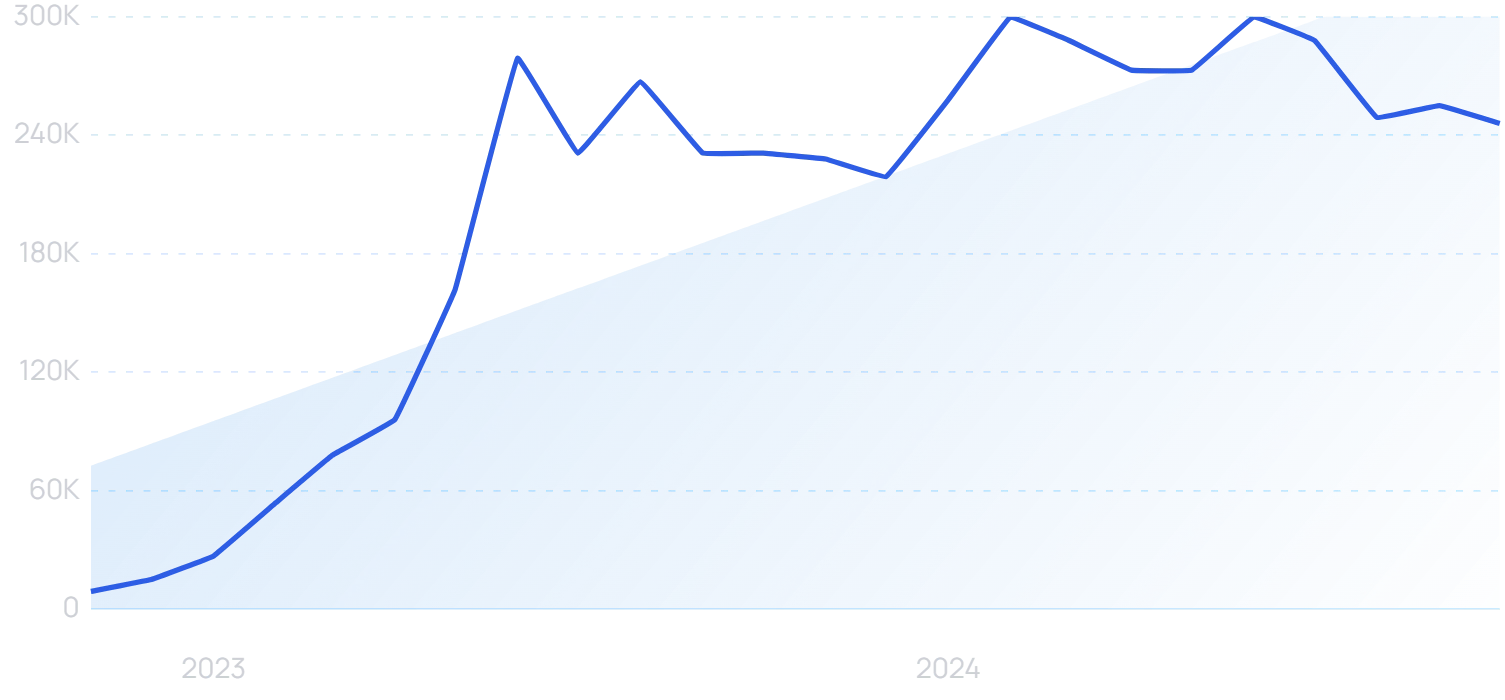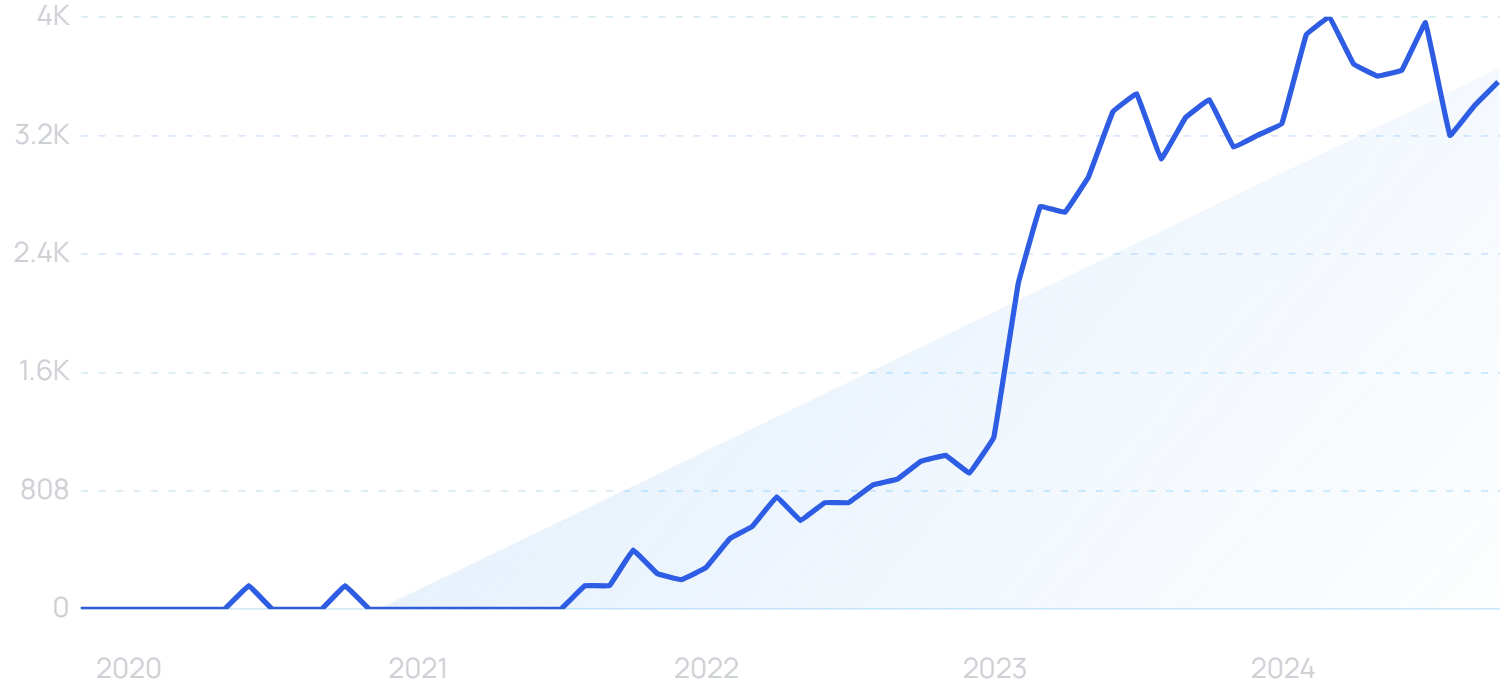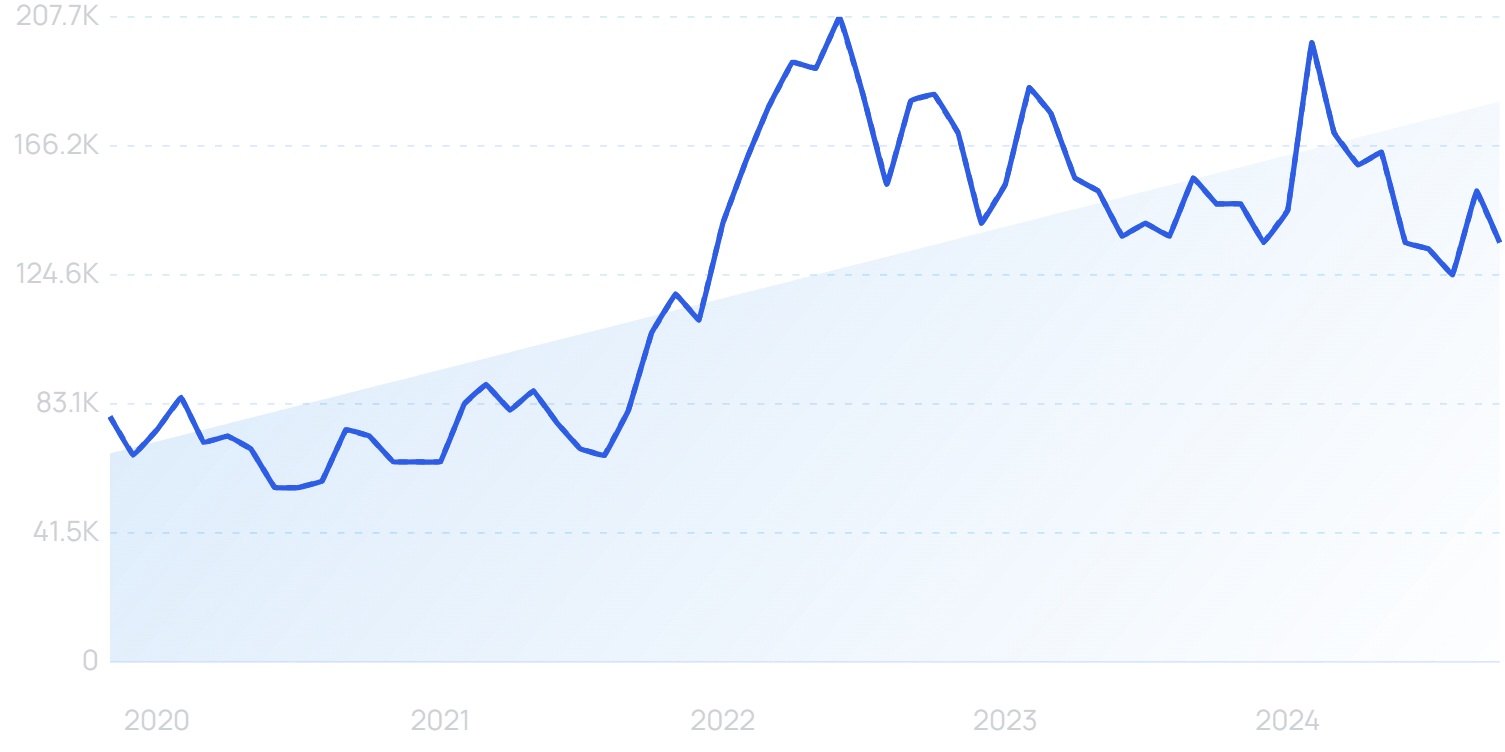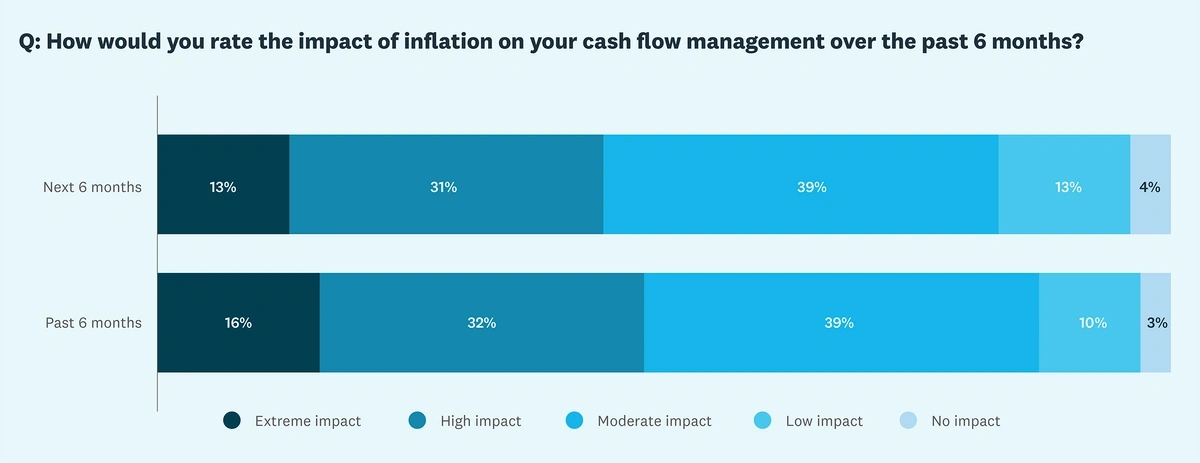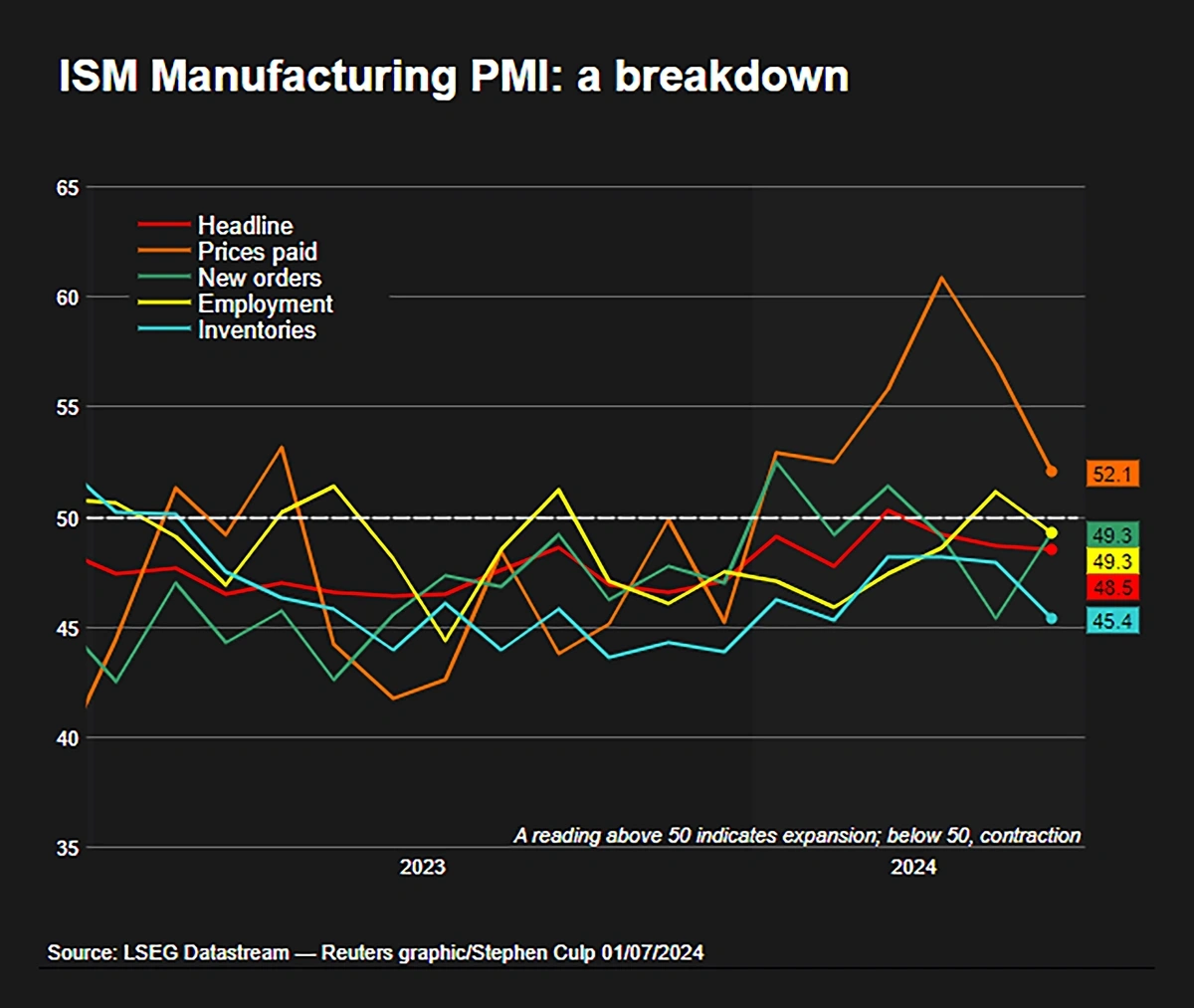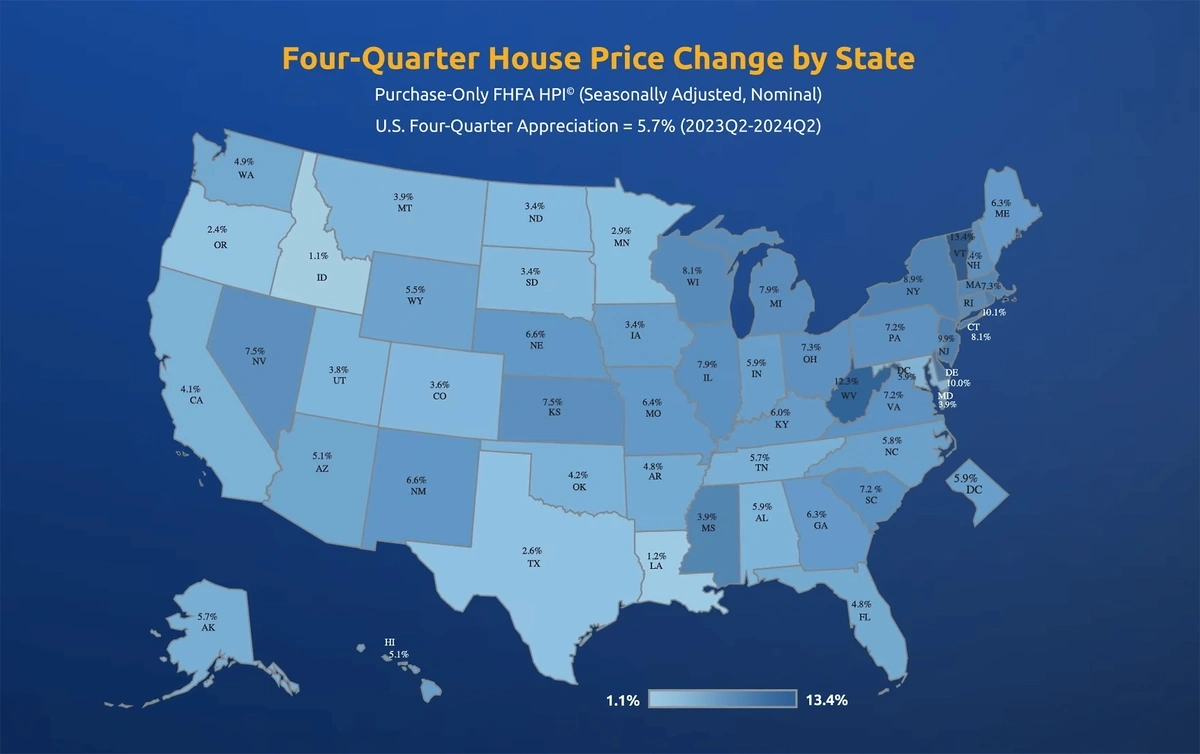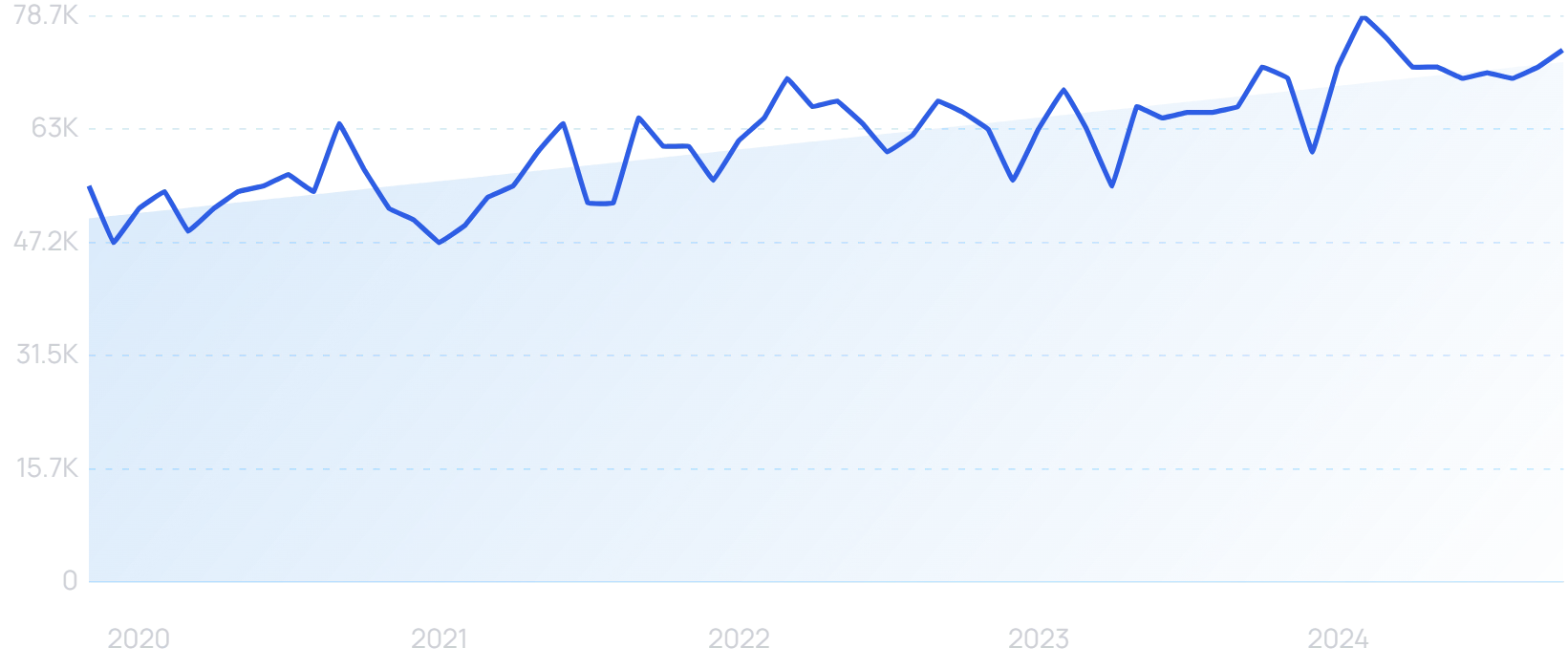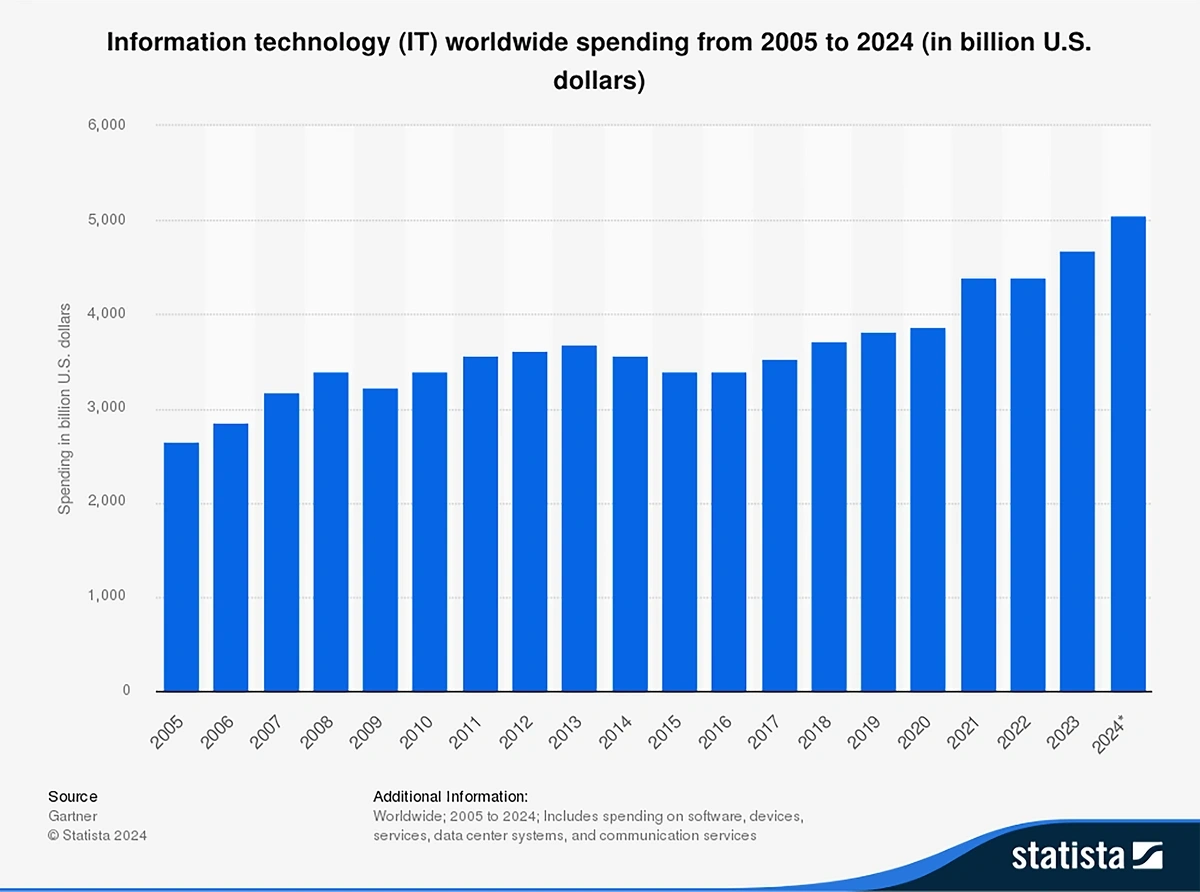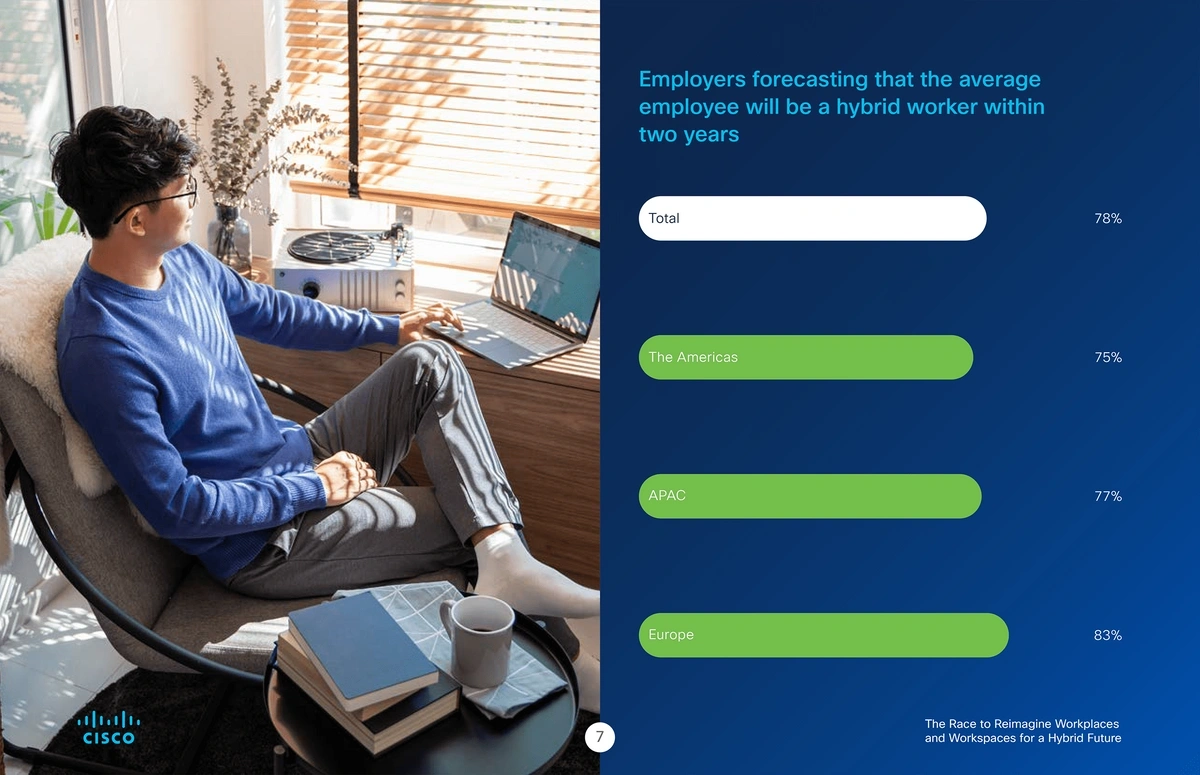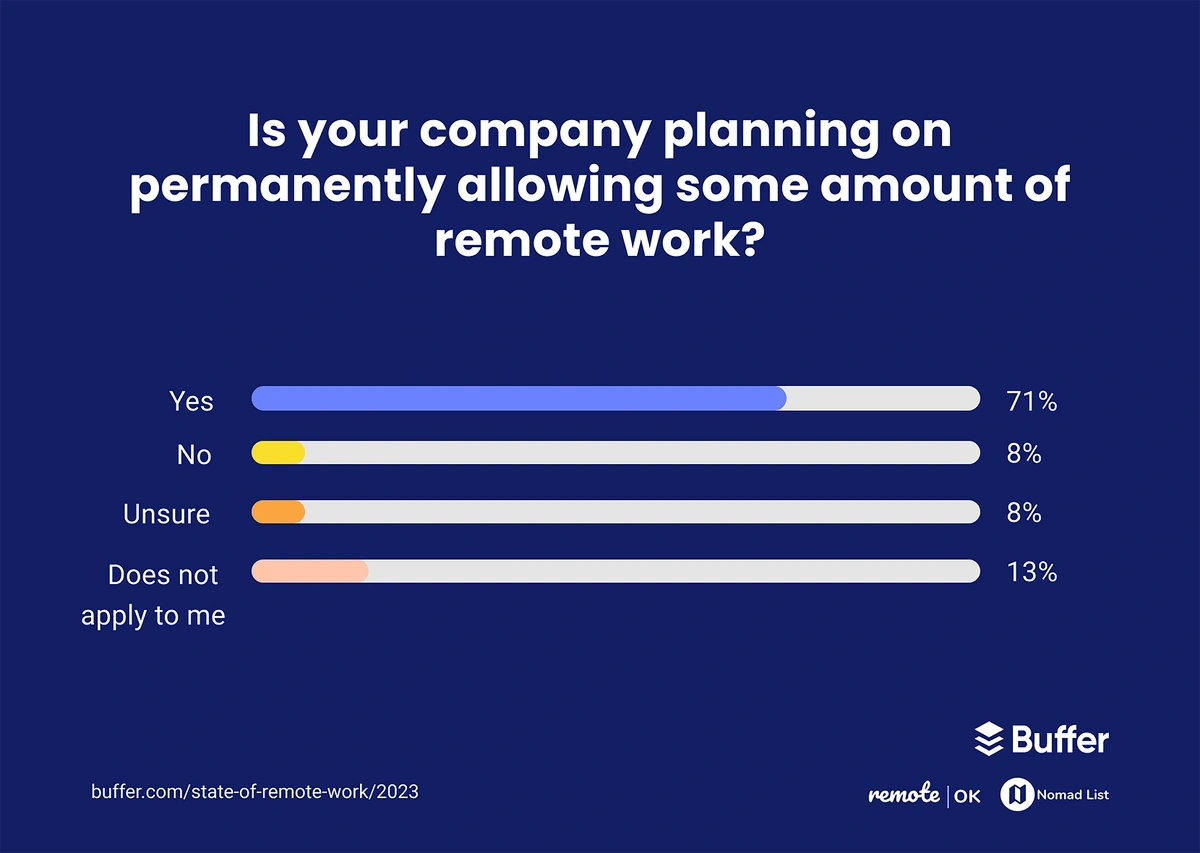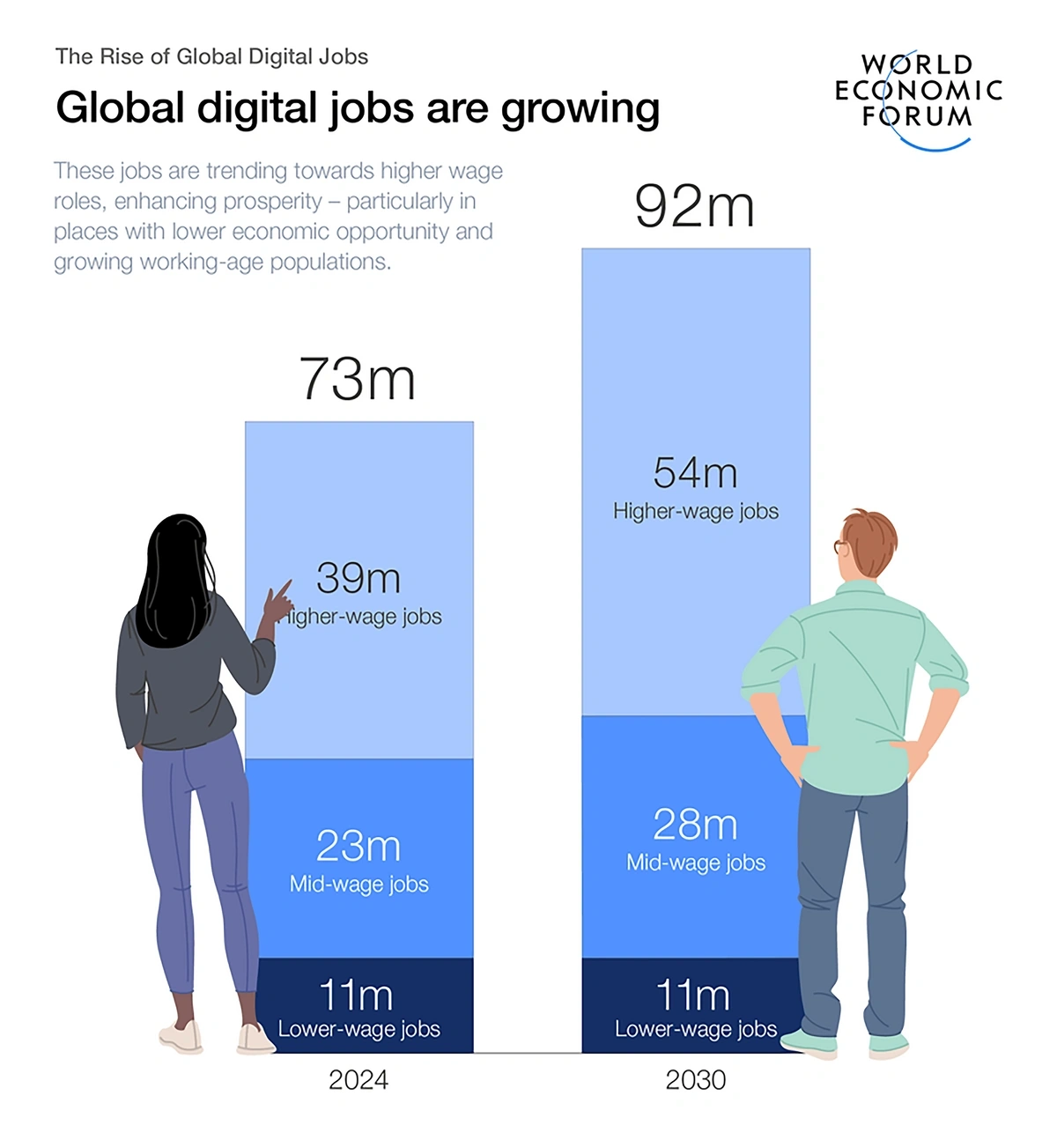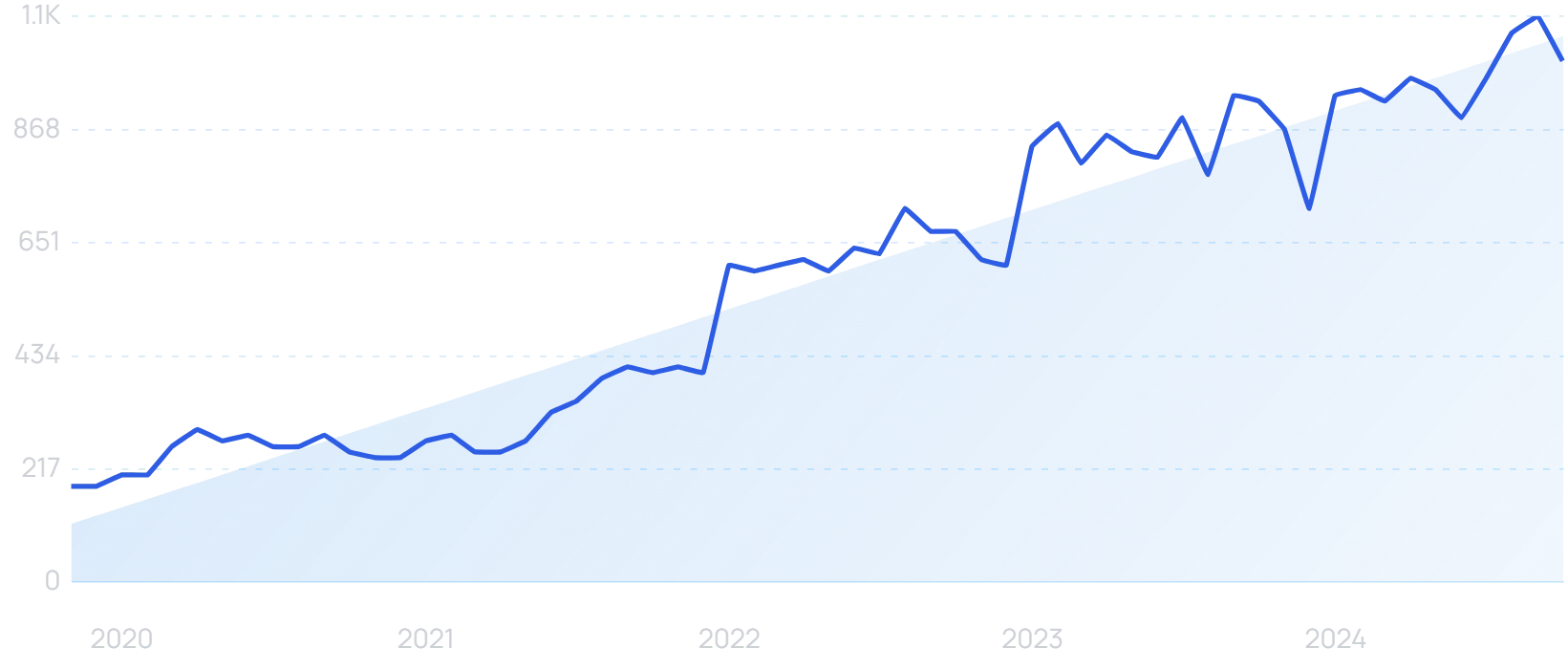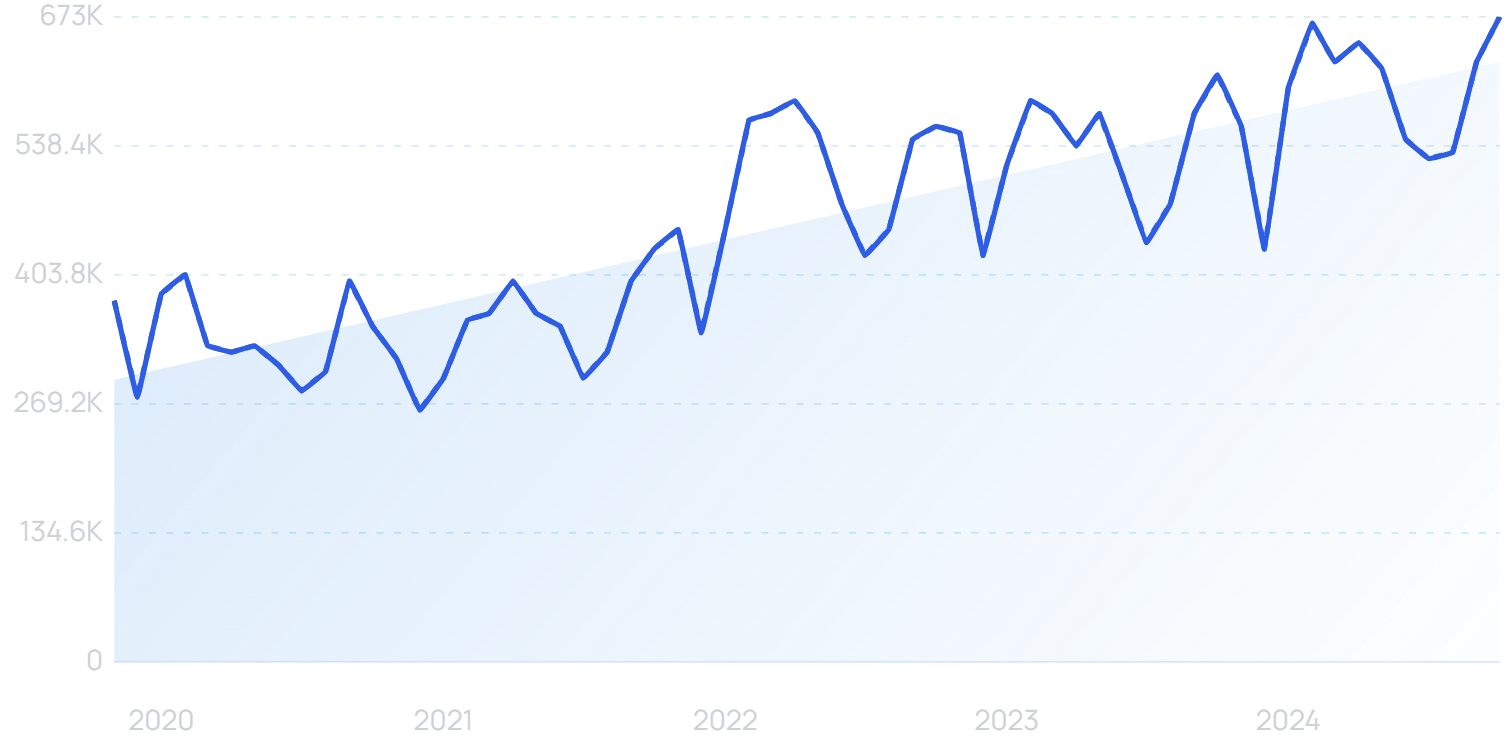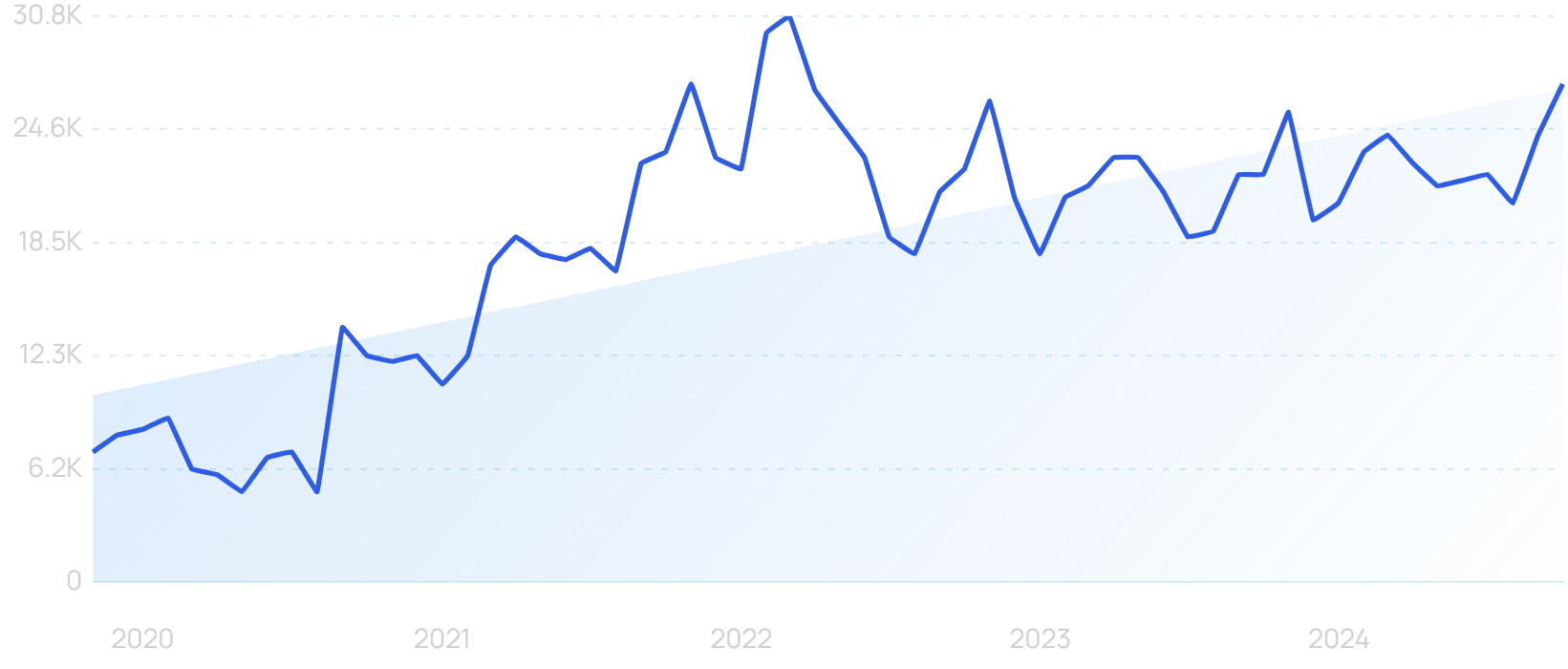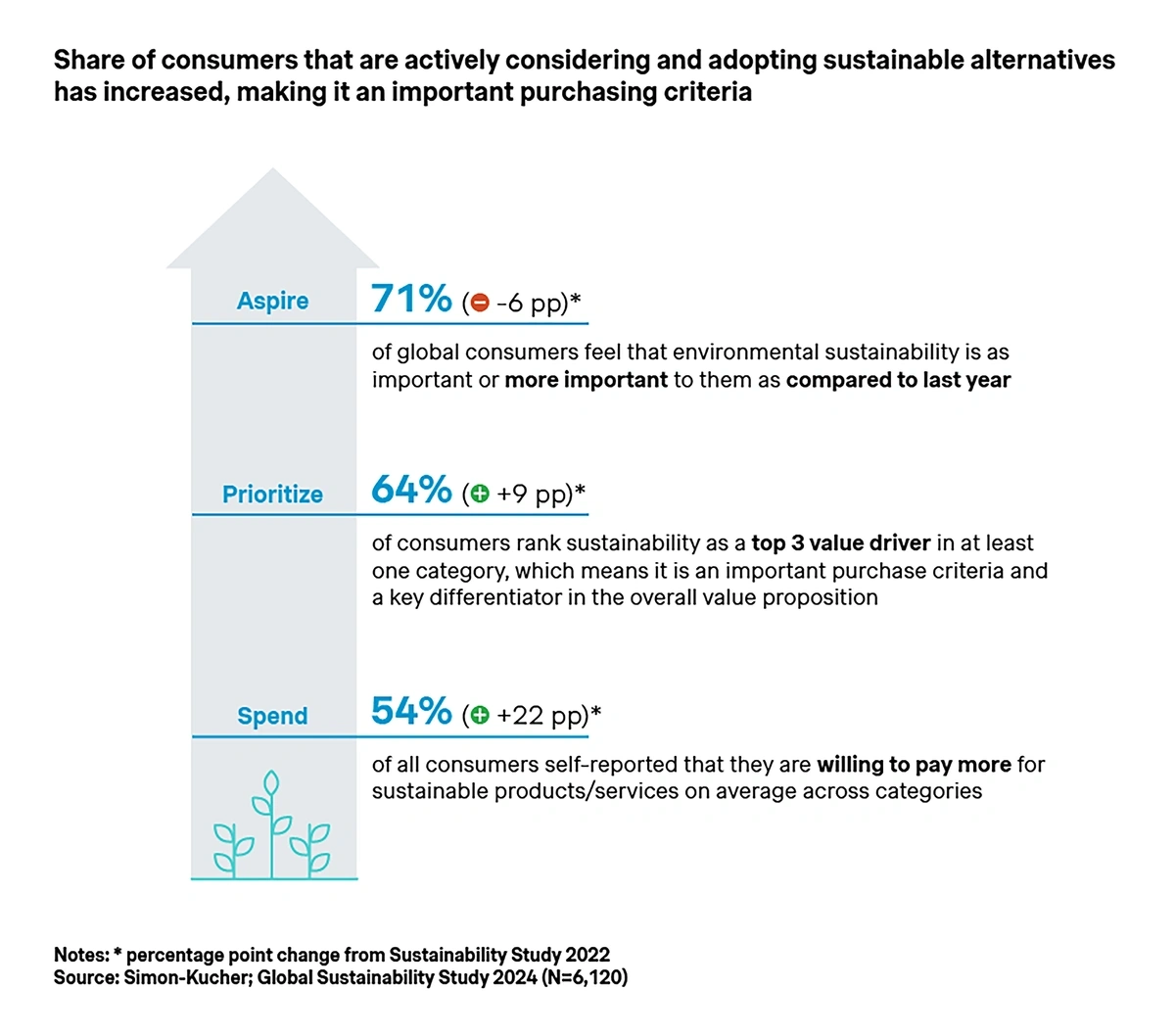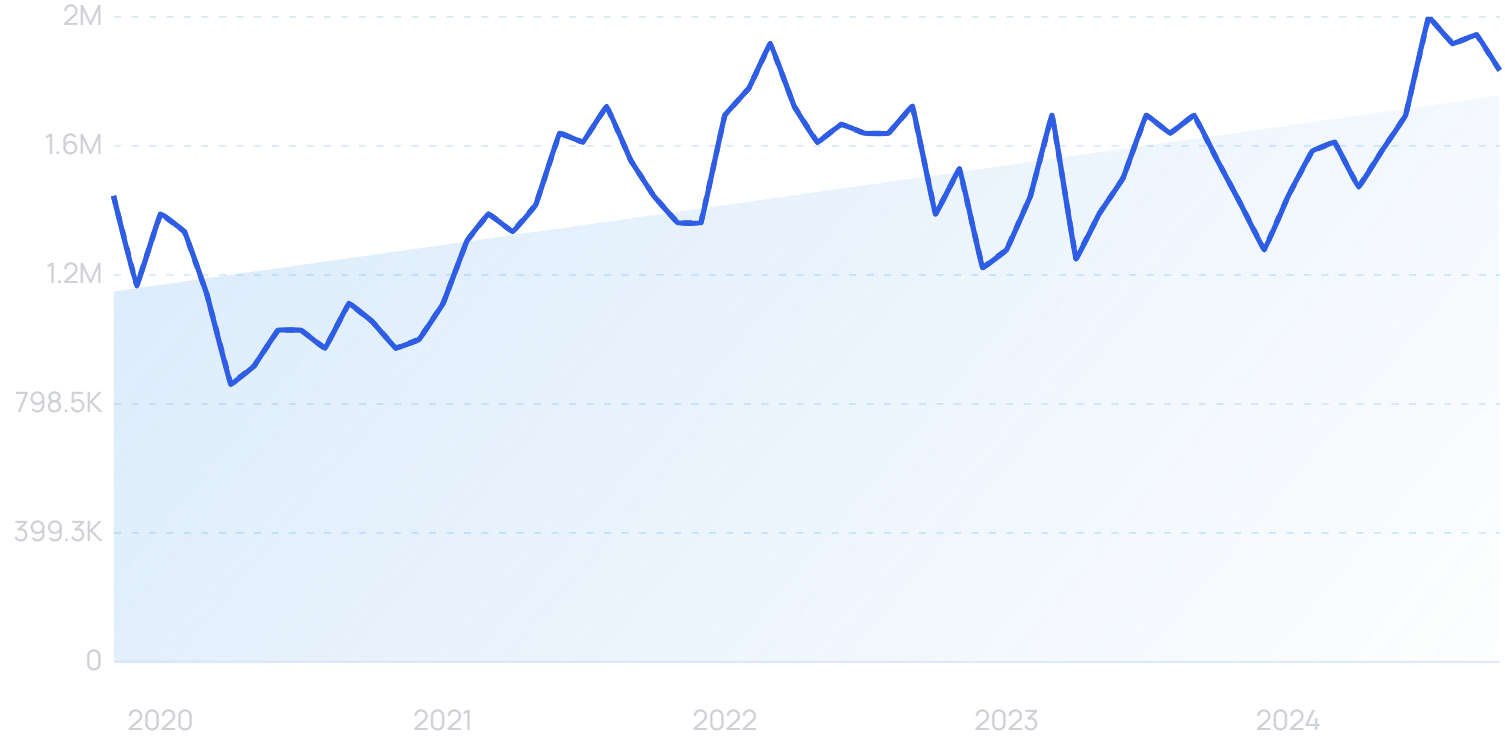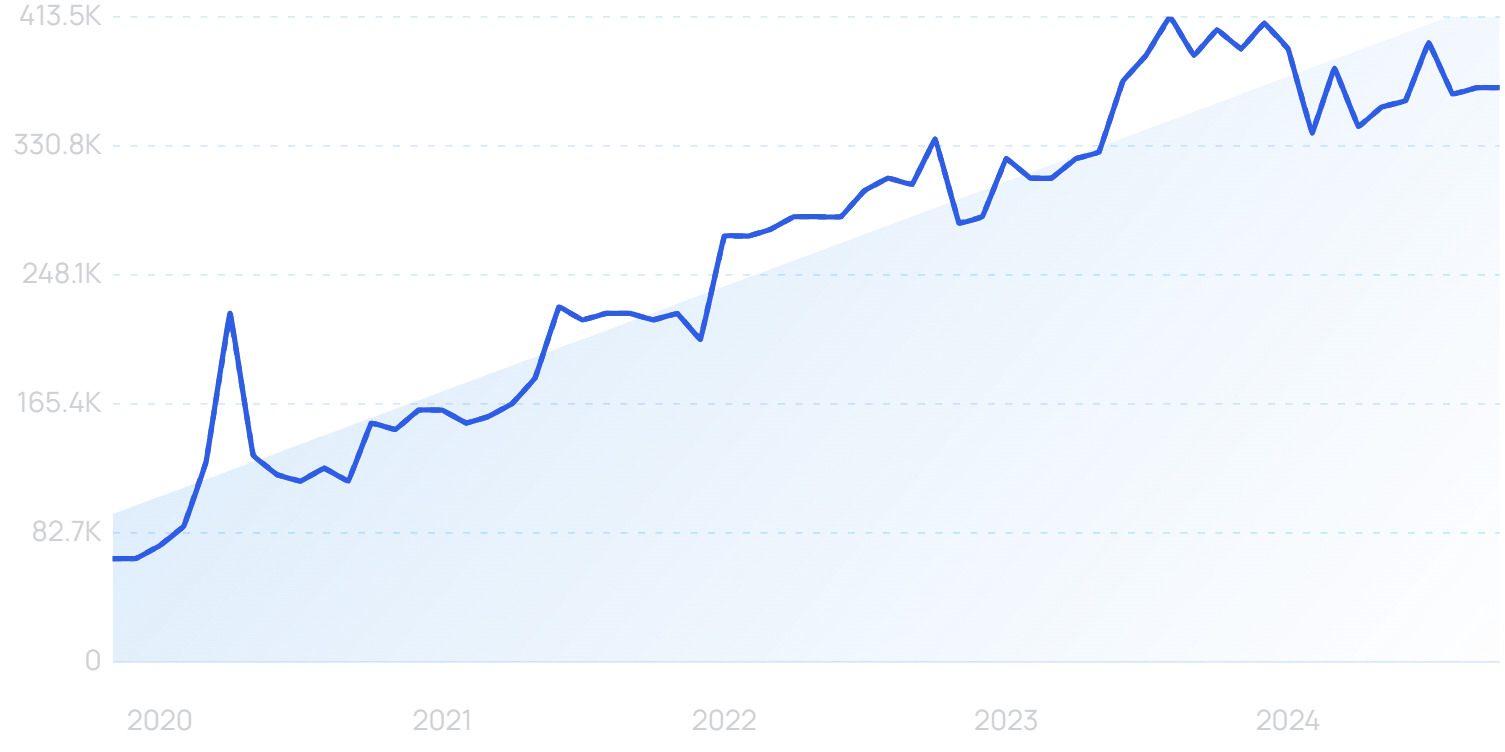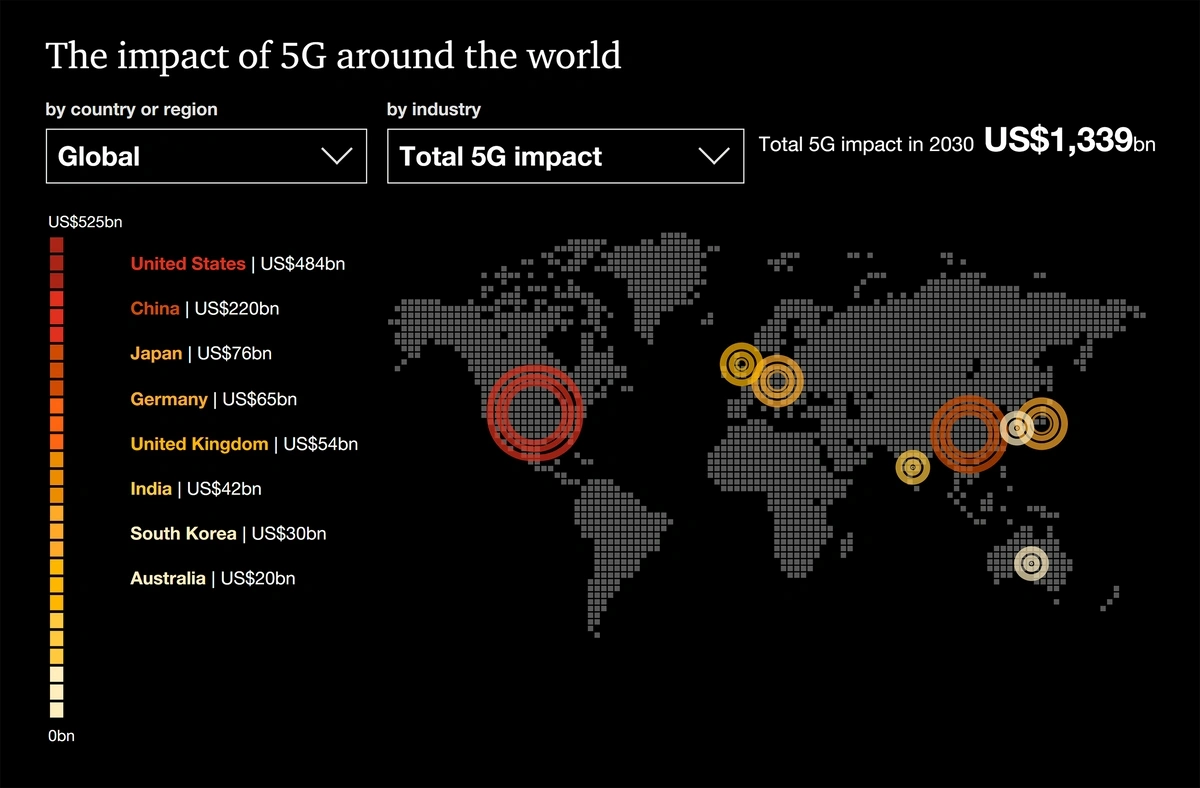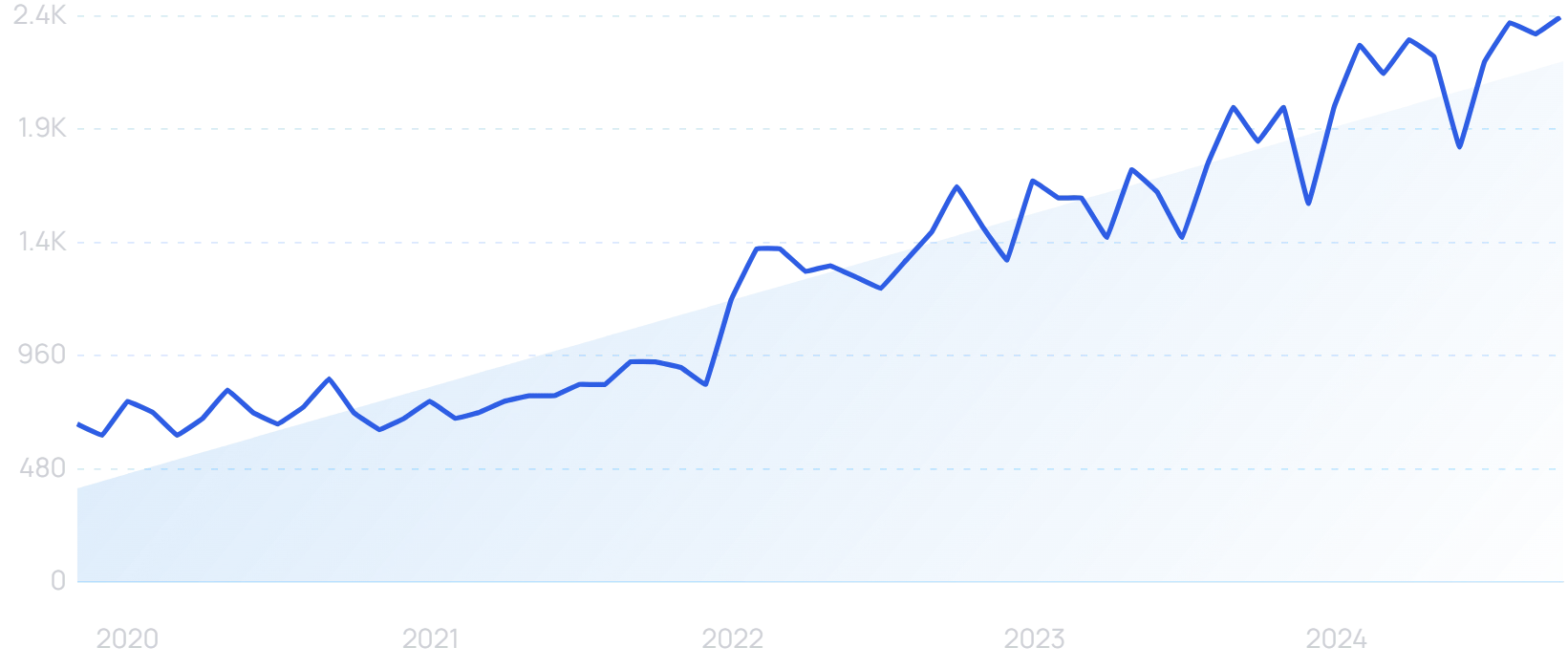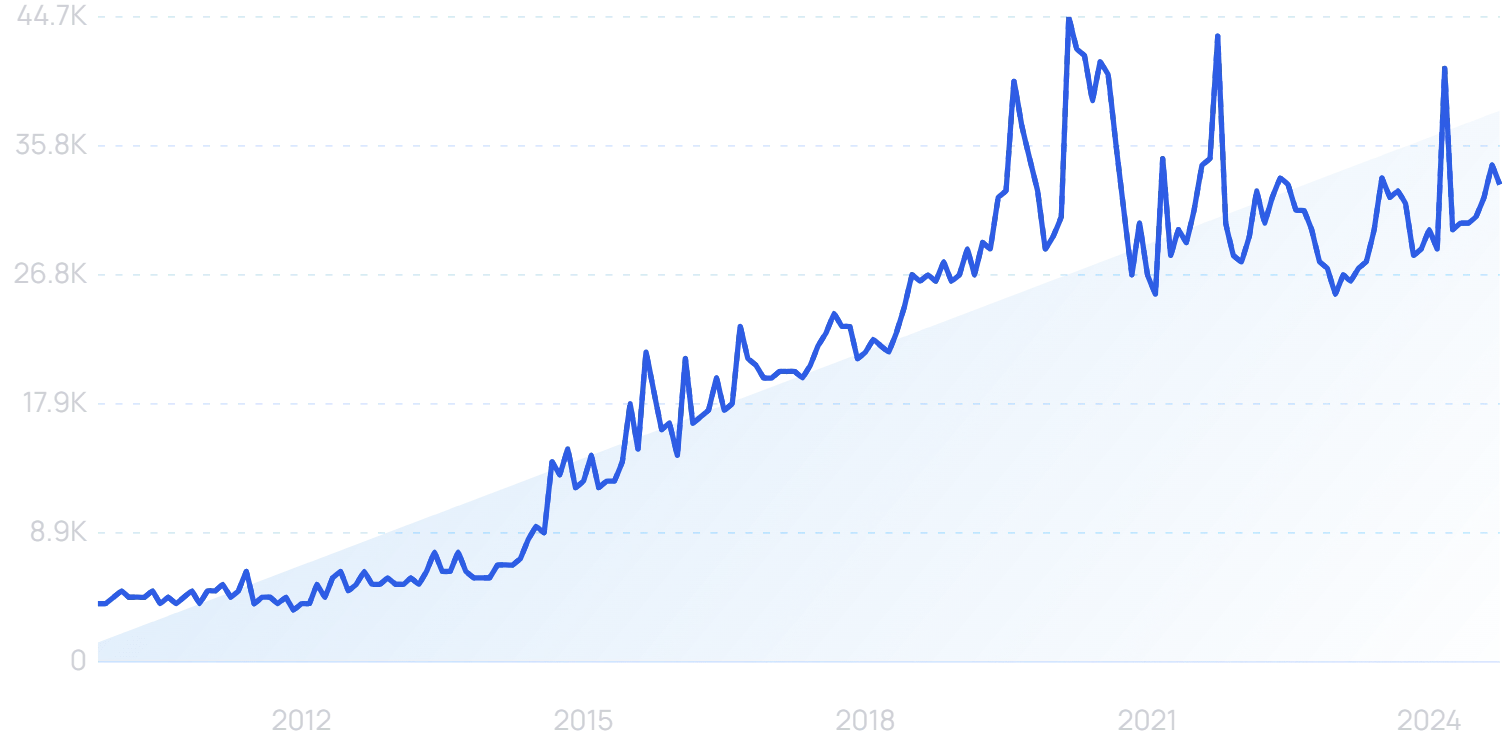
Top 8 Mega Trends Set to Define 2025
You may also like:
This is our list of the most important mega trends set to define 2025.
In this report we’ll focus on how businesses and investors can remain agile, coming up with new solutions to tackle the big-picture challenges of 2025 and beyond.
1. Generative AI Leads To New Risks And Opportunities
Generative AI has the potential to completely transform businesses, governments and culture in 2025.
Searches for "Generative AI" have increased by 8300% over the last 2 years.
Whether generative AI becomes a net positive or negative for society remains to be seen.
For skeptics, there are concerns about generative AI displacing the existing knowledge workforce.
61% of large US firms are already planning to use AI to automate tasks previously done by employees within the next year.
Even if AI has a moderate impact on the job market, fears around AI taking people's jobs are on the rise.
In fact, nearly a third of all workers earning less than $50k/year are concerned that their job could be replaced with an AI tool.
And McKinsey estimates that AI already has the capability to automate work activities that currently take up 60-70% of employees’ time.
However, AI also has the potential to create new jobs and drive greater efficiency in existing jobs.
Some tech experts see AI as just another tool that will increase overall productivity. And 72% of employees agree that GenAI will improve the quality of their work.
So in the short term people may lose their jobs. But over the long term, AI may end up creating more jobs than it replaces.
For example, LLMs like ChatGPT (which acquired millions of users in record time), have led to growing demand for new roles including:
- Prompt engineers
- Deep learning engineers
- AI ethics specialists
- LLM developers
“Prompt tuning” searches are up 7100% in 5 years.
2. Inflation Impacts A Wide Range Of Industries
Inflation is starting to come down, but it is still above the Federal Reserve’s 2% goal. Prices are 21.2% higher than when the pandemic-induced recession began in February 2020.
Search interest in the “inflation rate” has increased 65% in 5 years.
For small and large companies alike, issues with inflation are front and center: increased costs, reduced inventory, raised prices, and narrow profit margins.
The NFIB Small Business Optimism Index reports that 24% of small business owners view inflation as their single most important business problem.
Xero reports similar findings. Their survey results say almost half of small business owners (48%) have experienced an “extreme” or “high” impact on cash flow as a result of inflation.
Small businesses are feeling the effects of inflation, and do not expect much relief.
Electricity prices are rising above the broader inflation rate. That places pressure on most businesses, but especially those in energy-intensive sectors.
As of June, according to Reuters, the US manufacturing industry had contracted in 19 of the past 20 months. Experts expect that to continue throughout 2024.
The Purchasing Managers’ Index (PMI) indicates consistent contraction of US manufacturing over the past 20 months.
Real estate is one industry that can prove to be a hedge against inflation.
The Federal Housing Finance Agency reports that the average home value in the United States has increased by 5.7% over the past year, making this a prime industry for investors and sellers.
Every US state has seen average house prices increase over the last year, with the steepest rise (13.4%) coming in Vermont.
The energy industry is also expected to fare well in this inflationary period. Demand for oil and natural gas will continue, and the energy industry is expected to continue passing costs onto consumers.
In the UK, household energy bills are still up 29% from winter 2021/22 levels. That follows a steep 54% spike in April 2022, when the Russian invasion of Ukraine had a major inflationary effect.
Build a winning strategy
Get a complete view of your competitors to anticipate trends and lead your market
3. Rapid Adoption Of Technology Continues
Adoption of digital products and services jumped ahead six years as a result of the pandemic. And digital transformation remains high on the agenda.
Post-pandemic, businesses are paying even more attention to their organization’s "digital transformation." Search volume has increased by 28% in 5 years.
Already, 92% of organizations have now adopted some kind of cloud technology. There’s also a clear move towards big data and analytics.
In 2025, we expect companies across all industries to accelerate their tech spending.
This year, just 4% of companies plan to decrease IT budgets. 66% are preparing for an increase.
IT budgets have increased or remained steady every year since 2015.
As many sectors of the economy deal with labor shortages, automation is one solution we expect to see companies use in the coming years.
For instance, the healthcare industry could automate an estimated 28% of all work done by its professionals.
And of course, this ties into the growth of AI. McKinsey estimates the technology could add $4.4 trillion to the global economy annually.
Meta is expected to spend $40 billion in capex in 2024, largely on AI solutions.
4. The Hybrid Work Debate Rages On
78% of employers believe that the average employee will be a hybrid worker within two years, according to a CISCO study.
CISCO reports that employers are still envisioning a hybrid work future.
There has been an undeniable growth in return-to-office (RTO) mandates. 1 in 4 businesses plan to increase required days in office in 2025.
However, 80% of companies have lost talent as a result of RTO mandates. More than 1 in 3 knowledge workers prefer fully remote arrangements, compared to just 1 in 5 employers.
And as businesses battle for top talent, employees might be winning the debate. The number of new jobs listed as remote is up by 10% year-over-year.
A Buffer survey last year showed that 71% of employees say their company is permanently allowing some amount of remote work. That’s up from 46% in 2021.
Most employees still believe their employers have permanently committed to remote work arrangements.
The World Economic Forum forecasts that by 2030, a number of high-paying roles will come with more remote work opportunities.
Higher-wage roles could be the main area of growth in remote/digital working.
For instance, medical professionals could see more remote roles advertised in the coming years.
“Remote healthcare” searches are up 456% in 5 years.
Remote healthcare is typically about increasing practicality and accessibility for patients, with doctors and nurses generally required to be on-site for obvious reasons.
But healthcare managers could see a proliferation of remote roles.
The World Economic Forum whitepaper also predicts growth in the remote work landscape for software developers, information security analysts, financial risk specialists and network administrators.
5. Companies Focus On Sustainability
Society’s growing environmental concerns have led businesses from various sectors to emphasize sustainability.
Search volume for “sustainability” has been increasing for the past 5 years.
Nearly all of the world’s largest companies publicly report on their sustainability performance. From 2025, some will be obligated to report under the EU’s Corporate Sustainability Reporting Directive.
More than 3,400 businesses have committed to achieving net-zero carbon emissions in the coming years.
Consumer and business interest in “carbon neutrality” is on the rise. Search volume is up 196% in the past 5 years.
This is increasingly an environmental imperative. But it is also good business.
Many people today, especially younger generations, expect companies to be eco-conscious.
Although consumers are feeling the effects of inflation, they are still willing to pay a 9.7% sustainability premium.
Environmental concerns are a top-three priority in at least one product category for 64% of consumers.
Consumers are paying more for sustainable products, and sustainability is ranking higher among their priorities.
All of this drives revenue and brand value. According to Kantar, brands with high sustainability contributions have achieved 20% greater growth over the last four years than those with low contributions.
Accenture is one company prioritizing environmental sustainability. It places third overall on the 2024 JUST rankings.
“Accenture” searches have increased 47% in 5 years.
It has already met its 2025 Science Based Targets Initiative (SBTi) goal, reducing total emissions by 57% since 2016. And revenue growth is forecast to exceed expectations.
Much of that can be attributed to Accenture’s generative AI offering, which helps companies with automation. However, given the environmental concerns surrounding artificial intelligence, that makes its sustainable credentials more important than ever.
6. 5G Arrives In Full Force
The 5G mobile network promises to deliver a network with incredible potential.
Search volume for “5G” is up 460% in the past 5 years.
The technology uses shorter frequencies, which results in larger bandwidth. This translates to higher speeds, improved capacity, lower latency, and better service.
PwC estimates that 5G could add almost $1.4 trillion to the global economy by 2030.
Research from PwC shows the transformative potential of 5G.
An Ericsson Mobility Report estimated that there will be 5.6 billion 5G mobile subscriptions by 2029.
Experts say 5G will pave the way for connected homes, vehicles and logistics — the entire business ecosystem will see improvements from the new technology.
With 5G, manufacturing businesses are expected to see huge boosts in terms of efficiency.
This includes possibilities for automation and robotic controls in factories.
Huawei recently opened the first fully 5G-connected factory in Southeast Asia.
The 5G network covers 1.7 million square feet across three different sites. AI fault detection has been implemented. It increases first-time yield by 4%.
The healthcare industry is also poised to see new opportunities with 5G technology.
It might sound like the realms of sci-fi, but drones could deliver defibrillators to a patient’s location 4x faster than an ambulance.
Telemedicine is also primed to come on leaps and bounds, with healthcare providers able to access remote monitoring data from a large number of patients in real time. This alone could add $123.5 billion to global GDP by 2030.
7. Cyberattacks Ramp Up
Cybercrime is a $9 trillion problem and no industry is safe from the damage it can cause.
Search interest in “cybersecurity technology” is up 250% over 5 years.
The average cost of a data breach is more than $4.8 million — 10% higher than in 2023.
The use of 5G mobile networks, third-party apps, and remote work are making businesses increasingly vulnerable to cybercrime.
Disrupting normal business operations is one of the most common ways cyber criminals attack and extort money from companies.
In February, Change Healthcare suffered an attack that caused issues in filling prescriptions and receiving payments from insurers. While it has never publicly admitted paying a ransom, reports indicate that a payment of 350 Bitcoin (about $22 million at the time) was recorded on the blockchain.
The financial consequences of cyberattacks can wreak havoc on a business.
Sophos’ State of Ransomware 2024 report says ransom payments have increased nearly 5x over the last 12 months alone.
According to data from Sophos, ransom attacks are sharply increasing.
Due to the increase in ransom payouts, the United States government enacted a law requiring companies that provide critical infrastructure to report cyber attacks and ransom payments to the Department of Homeland Security and the Infrastructure Security Agency.
Another slightly different cyber risk is the theft of intellectual property (IP).
The Five Eyes intelligence group has accused China of hacking and spying in order to access IP.
Meanwhile, AI technology runs the risk of inadvertently infringing on IP.
In September, Story Protocol secured an $80M Series B round. The blockchain technology seeks to combat AI-driven IP theft.
“Story Protocol” searches are up 257% in 2 years.
IP is tokenized on the blockchain. And smart contracts ensure that creators get compensated when their work is used.
8. Payment Landscape Undergoes Seismic Shift
This year, $11.5 trillion will change hands via digital payments. Evolving payment trends have the potential to impact nearly every industry.
In North America, cash payments now make up just 16% of all transactions.
And when it comes to non-cash payments, contactless is taking over. Digital wallets are now the single biggest point-of-sale payment method worldwide, above credit cards and debit cards.
“Contactless” has seen 700% search growth over the last 15 years.
The effect of this change is primarily felt in the retail sector. But other developments could have more of a global impact.
Buy Now, Pay Later (BNPL) is increasingly popular among consumers. It has also permeated the B2B setting.
“B2B BNPL” searches are up 1800% in 5 years.
B2B BNPL is not inherently different from trade credit, but it comes with connotations of easy point-of-sale access with predetermined payment plans.
There’s also “open banking” to think about.
“Open banking” searches are up 44% in 5 years.
Slowly but surely, banks are opening up access to APIs for third-party providers. This could facilitate a proliferation of account-to-account (A2A) payments in the US.
Effectively cutting out the middleman, A2A payments could lead to reduced costs and improved customer journeys. McKinsey forecasts $200 billion of consumer-to-business transaction value in North America by 2026, with a potentially far higher figure when factoring in other kinds of payments.
Key Takeaway: Focus on Automation
That wraps up our list of mega trends that are expected to impact businesses across all sectors in 2025.
As it has in previous years, technology leads the list as organizations look for ways to embrace automation, robotics, 5G and new ways to pay while maintaining strict cybersecurity.
These mega trends also show us why the businesses that are able to adapt will be the ones likely to lead us into the future. We expect that the way they handle pressures from the economy and the workforce will determine their success.
Stop Guessing, Start Growing 🚀
Use real-time topic data to create content that resonates and brings results.
Exploding Topics is owned by Semrush. Our mission is to provide accurate data and expert insights on emerging trends. Unless otherwise noted, this page’s content was written by either an employee or a paid contractor of Semrush Inc.
Share
Newsletter Signup
By clicking “Subscribe” you agree to Semrush Privacy Policy and consent to Semrush using your contact data for newsletter purposes
Written By


James is a Journalist at Exploding Topics. After graduating from the University of Oxford with a degree in Law, he completed a... Read more

